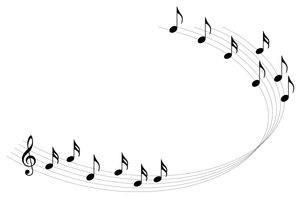As I’ve suggested in earlier articles, some people put a lot of emphasis on technique, however some of our most famous music artists don’t possess the “best” technique. So how is it that they become so popular?
My theory is that they know how to “turn a phrase,” how to utilize the “space between the notes” with maximum effectiveness. Players like Miles Davis, singers like Billie Holiday . . . Miles never had Fats Navarro’s technique; Billie never had Sarah Vaughn’s, yet they’re nonetheless at the very top of the all-time popularity list. In her day, Billie Holiday was more popular than Madonna, yet she never had any training as a singer, and sort of “fell into” a singing career by accident.

Good phrasing involves a keen sense of rhythm, and it is perhaps the most difficult thing to teach a student of the music, while being one of the most important aspects of one’s success, accessibility, and individuality as a player, in my opinion.
I have a theory of how to teach it effectively, and to a great extent, how I developed my own keen sense of melodic phrasing. I sincerely believe that my sense of melody, rhythm, and phrasing, is what makes my playing stand out among the veritable throng of guitarists out there seeking attention and relevance as a stylist. In fact, I believe it’s an essential quality of any and all highly regarded singers and players.
The way to practice good phrasing is to sing along with great “phrasers.”
For instance, I sang Wes Montgomery’s guitar solos from the album, The Incredible Jazz Guitar of Wes Montgomery (on Riverside) over and over. I tried to sing every nuance of the solo as perfectly as I could, and I did the very same thing with Charlie Christian solos.
Now, I am not talking about transcribing . . . I never did a lot of that, nor do I believe that playing someone else’s solos is best advised. What I am talking about is developing, through much repetition, how to sing a particular solo, mimicking as closely as possible every note that is played.
Every good jazz guitar teacher I have known advises we sing along with ourselves, to verbalize our lines as we play them. Something happens in the brain when we do that which strengthens muscle-memory, eye-hand coordination, and hastens the assimilation and internalization of musical material. By singing their solos well, and better yet, to actually memorize them, their exceptional rhythmic sense begins to seep into our playing, improving our overall skill on multiple levels.


